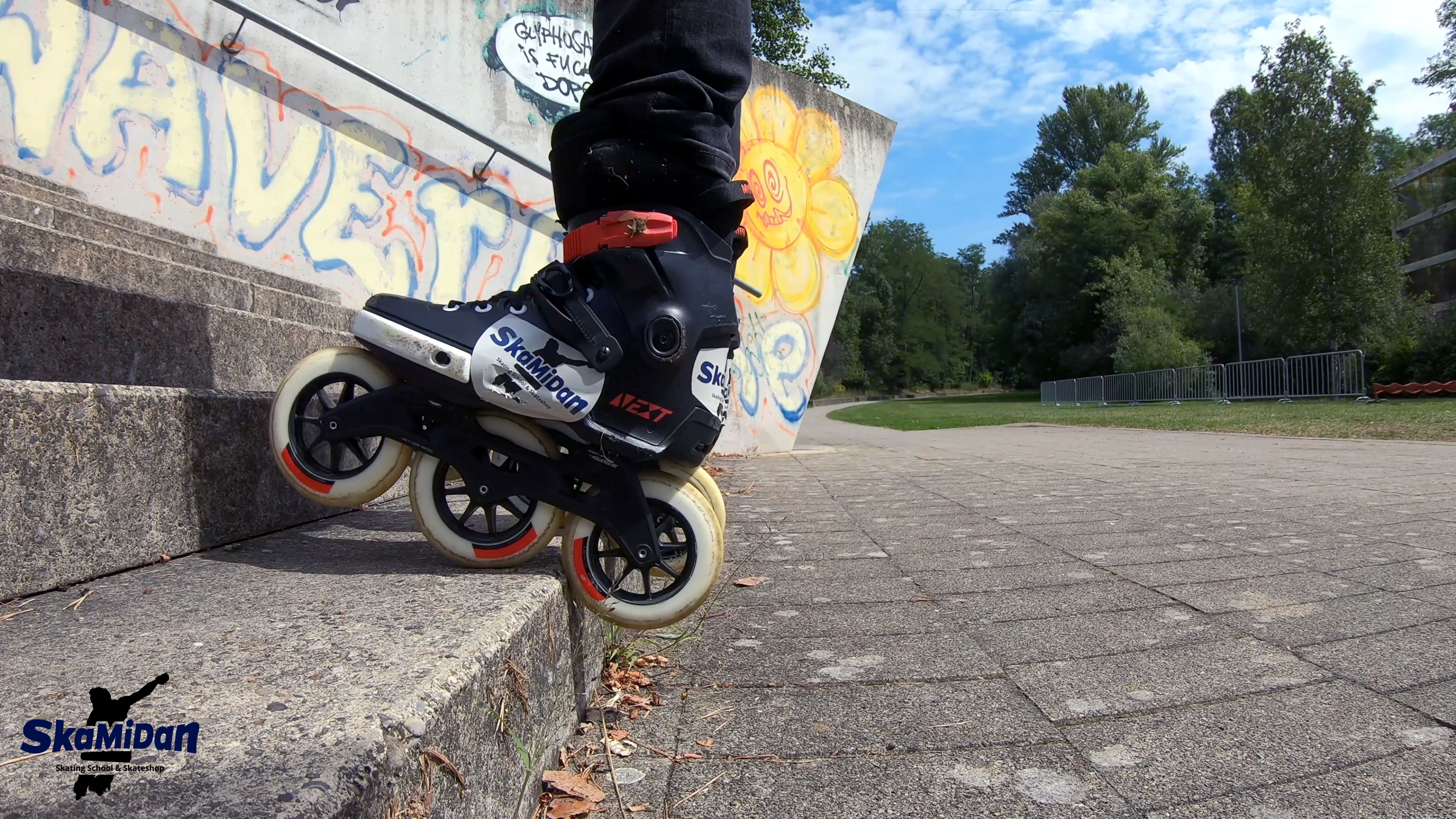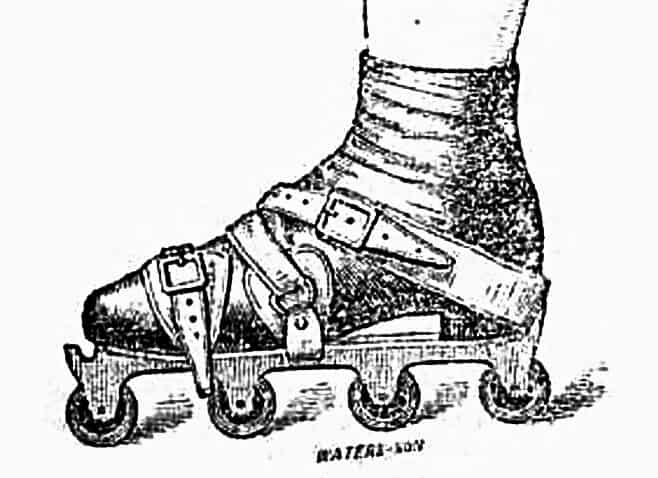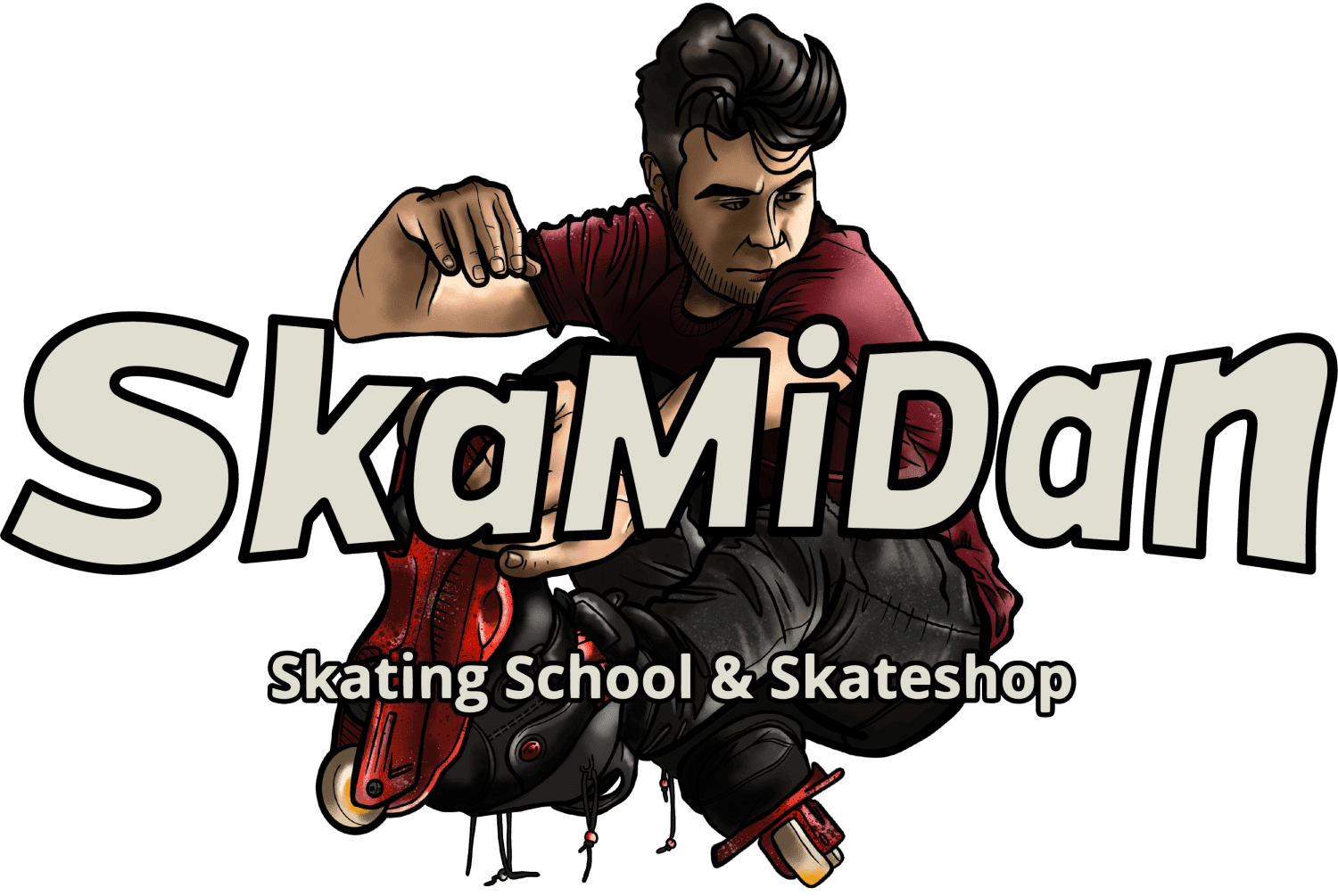You always wanted to know what inline skating is exactly, what diversity this sport offers or how it came about? You want to know how you can learn inline skating from scratch or how to learn it with our help? Then you are exactly right with us! Immerse yourself in the passionate world of SkaMiDan and learn more about the basic knowledge and facts about Inline Skating.

Of course, to be able to do this sport, or rather our passion, you need a pair of inline skates. Of course you may buy your own skates from us on our web shop or local. We also have a rental, where you can get a pair of rollerblades for trying out. But hey, we do not want to rush things. What are inline skates, how did they come about and why are there so many different ones?
Short trip into the history of inline skating
The idea of the very first prototype of an inline skate comes from ice skating. This was already constructed in 1760 by a Belgian man called Jean-Joseph Merlin. He is generally considered the inventor of the very first roller skate. Basically, the prototype was an ice skate, on which Jean-Joseph Merlin has attached two metal wheels.
The first patent for an inline skate was granted on April 22, 1823 to Robert John Tyers of London. He also designed skates by fitting them with several steel wheels standing one behind the other. Thus, the first inline skate was born.

Unfortunately at that time the conditions of the floors, roads, paths and squares was still very bumpy and for a long time not comparable to those we have today. This was also the reason why the first inline skates could not really prevail and were quickly replaced by the development of the first roller skates.
The first roller skates were developed in 1863 by the American James Leonard Plimpton. As the today’s roller skates, they already had two wheels mounted side by side. The arrangement of the wheels brought and brings today the advantage of a safer body posture, a better balance and a higher maneuverability, than with inline skates.

The real breakthrough of inline skates was more than a century later, to be exact in 1979. That year, the hockey player Scott Olson founded the company Rollerblade. This was the true birth of the inline skates. Since then, they are equipped with ball bearings and good rolling properties. By the company Rollerblade it became to trend, that inline skates were also often called as “Rollerblades”, which has prevailed until today as recognized synonym for inline skates. This is similar to the brand name “Tempo”, which is often used as a synonym for a “paper handkerchief” today.
In 1995, the “International Inline Skating Association” from the USA has trained the first inline skating instructors in Germany. And so there were no more limits to inline skating. The various subcategories and disciplines in inline skating were quickly created. This resulted in a large number of different inline skates and roller skates. More basic knowledge and interesting facts in inline skating will follow in our next chapter about the most important disciplines of inline skating.
The most important disciplines of inline skating
As soon as you take a closer look at inline skating or at the latest when you want to buy a pair of inline skates by yourself you will be confronted with the existing variety of inline skates and thus with the agony of choice. But why are there so many different inline skates?
With the establishment of inline skating, more and more disciplines and subcategories have gradually developed. For all these disciplines, there are various inline skates, which have been specially developed for their individual use. In addition, there are also inline skates for all price categories. If you’ve already looked around our shop, you’ll find that we do not offer inline skates at junk prices. But why?
Especially if you do not know if inline skating is fun, it makes sense to buy a cheap inline skate or not? No! Sure when start inline skating you don’t want to directly buy a high-priced inline skate. But one thing is certain, with a discounter inline skate you won’t be able to discover the fun of skating. The reasons for this are usually poor rolling properties, uncomfortable shoes or liners, painful bruises, feet going to sleep, poor support for your ankles and feet and thus a poor fit in the shoe.
We love inline skating and therefore we only offer skates that meet our minimum standards and requirements. A new and good sports shoe usually costs more than 100 euro and this hasn’t any frames, wheels or ball bearings. High-priced inline skates are characterized by individual customization options, good comfort and heat moldable liners and shells, as well as generally higher quality materials, high-quality workmanship, hardware and durability.
As a beginner in inline skating, you maybe won’t know in which direction it should go and what kind or discipline of inline skating will be most fun for you. For this reason we will show you the most important disciplines and advantages of therefore recommended skates.
- Fitness Inline Skating Fitness Inline Skating is the term used to describe recreational and casual skating, in which you skate small or large distances, whether alone, with friends or acquaintances. For this purpose, fitness inline skates are usually used, which mostly have a heel brake. Fitness inline skates are usually characterized by their lightweight and comfortable soft boot. The professional models are usually a bit harder. But for that they often wrap perfectly around the foot and offer a better support, as well as a higher quality hardware.
- Urban Inline Skating Urban Inline Skating is trick and stunt inline skating in urban environment, but also in rural areas. Urban inline skaters do jumps over construction pits, slides over large squares and narrow streets, skating and jumping down stairs and just turning any obstacle into a skatable object. Urban inline skates offer a better support for your feet and ankles thanks to their hard boot, thereby they improving your stability onto inline skates. The entry-level models usually come as a hard-shell skate with a removable liner. In addition, in the high-price segment there are also urban skates in which the hard shell and the lining are connected. These are usually also thermoformable, offer a more direct skating feel, maximum power transmission and give you a better stability.
- Freestyle Slalom Skating Freestyle Slalom Skating is about skating through and around slalom cones. This includes balance tricks as well as acrobatic, dance movements and slides. Freestyle slalom skating itself offers many different subcategories such Classic Freestyle Slalom, Speed Slalom, Freestyle Slides, Pair Slalom and more. Slalom inline skates are characterized by a very direct power transmission and a narrow shoe and design. However, the most important thing about slalom inline skates is the so-called wheel base. It defines the distance between the foremost and rearmost point where the wheels have contact with the ground. Two of the golden freestyle slalom skating setups are 4x 80mm wheels with a wheel base of 243mm and 3x 90mm wheels with a wheel base of 235mm.
- Aggressive Inline Skating Aggressive inline skating is trick or stunt skating. The trick repertoire of aggressive skaters includes airs, big jumps, slides, stalls, grinds and much more. Probably the most important element of aggressive inline skating is grinding, which means slipping over hand rails, pipes, copings, walls and other edges and surfaces. Aggressive inline skating distinguishes between park skating at a skate park, vert skating in half-pipes and street skating, where all imaginable objects of cities and the environment are turned into skate objects. These include in particular walls, handrails and stairs. Aggressive inline skates are characterized by a sturdy and robust boot. However, the special features are the so-called soul plate and the groove or H-block of the frames, which allow safe and comfortable grinds.
- Speed Inline Skating Speed inline skating is skating from A to B or in a circuit with the goal of the highest possible speed. Speed inline skates are among the most expensive inline skates on the market. These stand out especially by their low (sneaker) cut. In addition, these are usually made of carbon or other thermoformable materials and are very lightweight. Due to the low cutting of speed inline skates, Speed inline skating requires a good well-trained and stable foot and joint muscles.
- Offroad Inline Skating Offroad inline skating is skating on uneven grounds such as forest trails, sandy trails, meadows, forests, cross-country trails, downhill trails etc. Off-road inline skates are characterized by their SUV air tires, which makes it possible to skate through mud and dirt. Here you should always make sure that there is enough pressure into the tires.
- Downhill Inline Skating Downhill inline skating is downhill skating of paved roads and paths, such as from a high mountain pass down into the valley. Downhill inline skates are characterized by a long frame with 4 or 5 wheels. No other skate comes with such a big wheel base as a downhill inline skate. The wheel base means the distance from the rearmost to the foremost point of contact of the wheels with the ground.
In addition to the disciplines mentioned above, there are many more such hockey inline skating, marathon inline skating, nordic inline skating and many more. At this point we would like to leave it at the mentioned disciplines and continue with the basic terms and trick categories of inline skating.
Basic terms and trick categories
Basic terms
- Warm Up The term warm up describes the warm-up phase of a skater before he begins doing his actual tricks or practicing new techniques and tricks. A warm-up can consist of simple rounds on the skates up to extensive stretching exercises and basic tricks.
- Straight The term straight is used only in very few cases, because it describes only the forward skating and is considered as a preceded addition for any trick that is performed without a turn from skating forward.
- Fakie The term fakie describes backwards skating and is considered as a precedent addition to any trick, which is performed from backwards skating.
- Spin The term spin describes a rotation of degree x. A 180 ° spin is e.g. a half of 180 degrees, so a half turn. A 360 ° spin is a complete rotation, a 540 ° spin is a one and a half rotation etc. In practice, the addition “spin” is usually omitted and the degree of rotation is named in English. A “One Eighty” is e.g. a rotation of 180 degrees, a “Three Sixty” is a rotation of 360 degrees and so on.
- Zero Spin The term Zero Spin can be used as an addition to any trick that is performed without a spin. In practice, this term is usually used only as an additive in jumps without a rotation.
- Switch Each skater has a stronger leg, a favored direction of rotation, a favored direction of looking to back, a favored foot for braking, as well as a side to which a trick will be performed. The term switch refers to the execution of any technique and any tricks towards the unfamiliar side or the weaker leg etc.
- Switchups The term switchup refers to changing the foot position during tricks such a stall, slide or grind. As an an example, if you’re doing a grind and switching to another grind during this grind so it’s called a switchup.
- Trick Line, bzw. Trick Run The term trick line, or trick run describes a sequence of several tricks, which are performed without an interruption. A line, or a run can theoretically involve infinitely various roads, objects, ramps, obstacles and others. The trick line ends as soon as the skater falls or stops. On the other hand, a trick run ends as soon as the predetermined time has elapsed, e.g. a duration of 120 seconds. In practice, you usually use only the term “run” or “line” without the addition “trick”.
Trick categories
- Airs The term Air describes jumping with inline skates.
- Grabs The term grab describes the grabbing of one or more skates with the hand or hands during a trick, such an airs, slide or grind.
- Manuals The term manual describes skating on only two or less wheels.
- Flips The term flip describes a rotation over the head. As an example: A backflip belongs to the category of flips.
- Slides The term slide describes sliding over the ground or another surface on the wheels of inline skates.
- Grinds The term grind describes sliding over a handrail, a wall edge or other edges and copings with the soul plate and / or the h-block or grooves of aggressive inline skates.
- Stalls The term stall describes standing with inline skates on an edge, wall, pipe or similar.
- Lips or Lip Tricks The term “lip trick” is similar to the term stall and refers to standing on a wall edge, pipe etc. In contrast to a stall a lip trick can also be performed with your hands. A typical lip trick is e.g. a handstand or handplant.
- Wallrides The term wallride refers to skating onto wall.
- Wallstalls The term wallstall refers to standing on a wall. The wall stall is, so to speak, the slimmed-down version of a wall ride.
- Slalom The term slalom usually describes skating through and between slalom cones.
Of course there are many more terms. But we introduce these gradually to the appropriate places in our tutorials There we will also explain them. Further basic terms of the different disciplines can be found in the category “basic knowledge and facts” of the respective discipline.
Overview of all skate tutorials from SkaMiDan
Inline Skating
Aggressive Inline Skating
Freestyle Slalom Skating
More videos and trick tutorials you will find on our YouTube channel.











